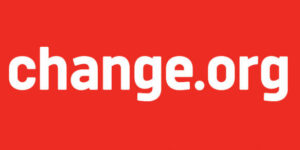252 Powerful Words to Avoid Apocalypse at Job Interview
In the beginning was the Word. Have you ever wondered why some writers can’t hook us while others simply toy with your emotions? Why do
In the beginning was the Word. Have you ever wondered why some writers can’t hook us while others simply toy with your emotions? Why do
Many professionals believe that the humble job board is on its way out. With social media taking the recruitment world by storm, you could be
Silicon Valley is home to some of the world’s most successful tech businesses, all offering bigger and better perks than most of us could dream
The method for sourcing the best talent has shifted over the past four years. Internet job boards currently account for 42% of quality hires, followed
If you haven’t written a resume in a long time, but are considering seeking a new position in 2015, it’s important that you are up
If you haven’t written a resume in a long time, but are considering seeking a new position in 2015, it’s important that you are up
Written By: Mary Isabale “What do you want to be when you will grow up?”- a famous question we all have faced and had to
Sometimes you read a white paper and think, “That was really interesting. I DO need to think more about targeted learning plans.” And sometimes you

For Babbitt, who never hurt anyone in his life. Long ago, I remember hearing someone say that in life, suffering is mandatory but misery is

Technology has given us the ability to stay connected 24/7 which is a blessing and also a curse. One of the downsides is that the

Hiring managers and recruiters often have something to say about the behavior and lack of professionalism of candidates. But maybe it’s time to look in

As a business manager or owner of a company, there are many things you can do to reinforce employee empowerment with the self-will to strive for

“If you want to have what others don’t, you must do what others won’t.” – Lisa Ryan How often do you hear these types of

Any change, even a change for the better, is always accompanied by drawbacks and discomforts. ~Arnold Bennett Change is hard. We all know that. Changing

A recent Gallup poll found that engaged employees display an unexpectedly strong commitment to their work. Almost two-thirds (63%) of workers whom Gallup classified as

I had the good fortune of having my interest in the power of culture sparked nearly 20 years ago when I was a VP with

One of the most difficult skills for a young professional is handling money. It’s not about balancing your checkbook or keeping up on student loan payments,

According to a recent Gallup study, worldwide, only 13% of employees are engaged at work. In a 142-country study on the State of the Global

There’s something fundamentally broken with the way employers treat potential employees. Change is long overdue. Let’s fix this…

What happens when nearly 50,000 job seekers speak out about their candidate experience? Great insights surface! Let’s discuss at #TChat events

In an age of HR specialization, how can one-person departments succeed? Suggestions from the #TChat crowd…

Are you a geek? Your job prospects may be stronger than you think. Here are 5 ways your uniqueness can propel your career

How can employers map out a more effective internship program? This infographic offers insights from student employment data…

Mobile recruiting is revolutionizing HR. Now it’s time for mobile hiring to step in where the mobile candidate experience leaves off…

When you’re job hunting, information is power. Try these social media tips to stay a step ahead of recruiters and hiring managers.